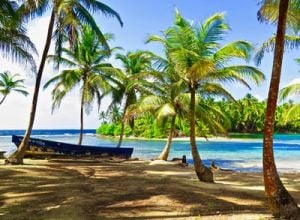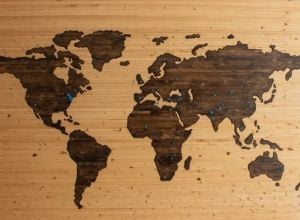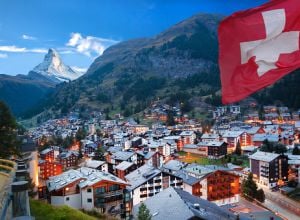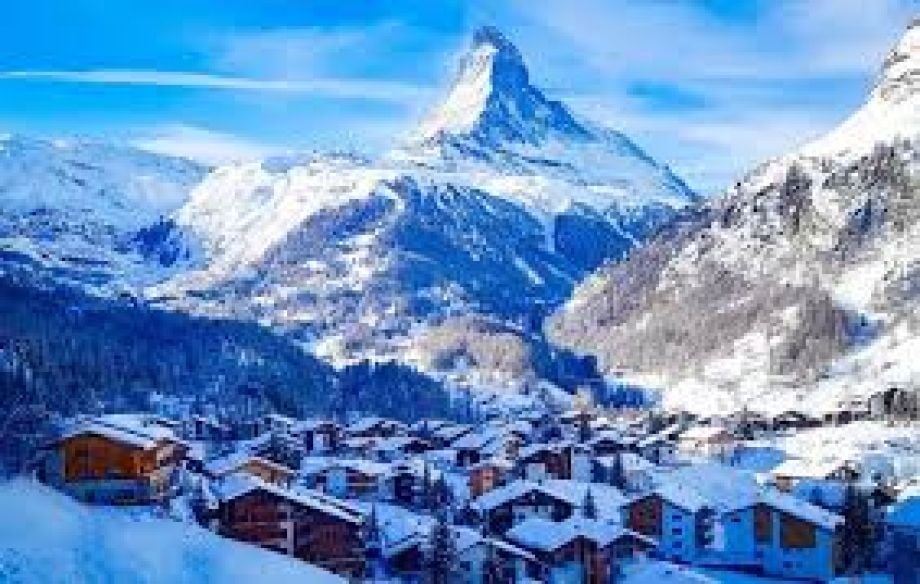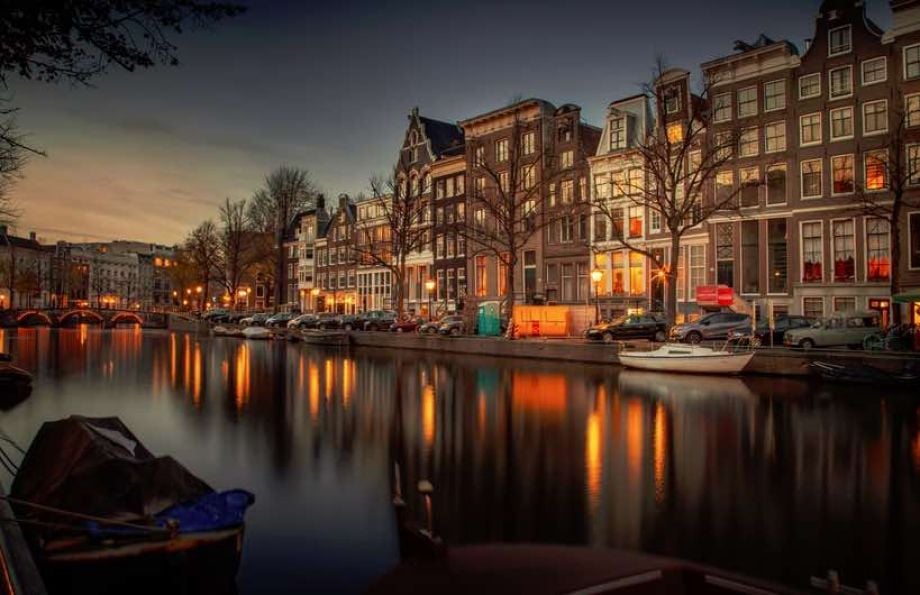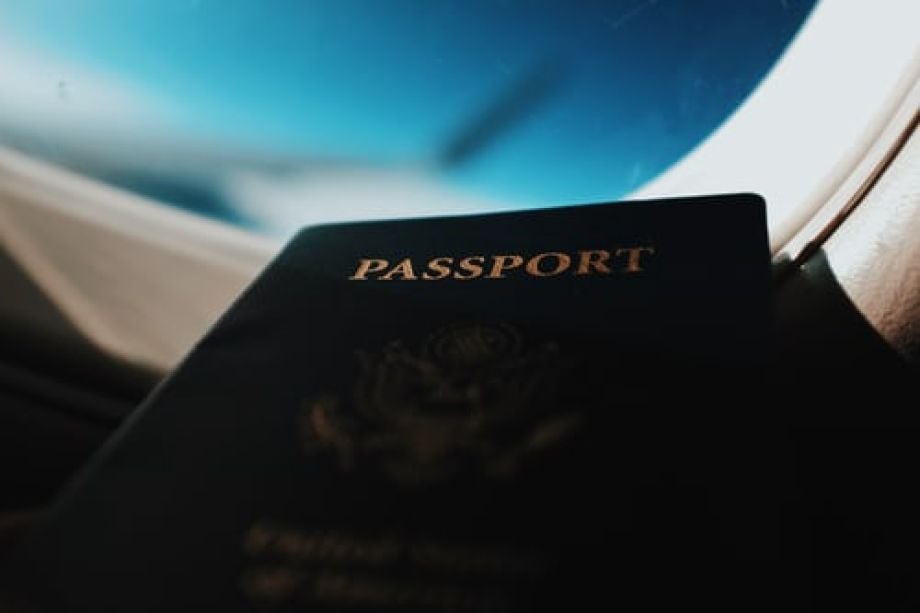Panama has long been recognized as a prominent tax haven, offering a range of financial services and structures that attract individuals and businesses seeking to minimize their tax burdens. The country's offshore banking system, coupled with strict secrecy laws and favorable tax policies, has made it a popular destination for international wealth management and corporate structuring.
The roots of Panama's status as a tax haven trace back to the early 20th century, with its strategic location and the construction of the Panama Canal playing crucial roles in its development as a financial center. Over the years, Panama has refined its legal and regulatory framework to accommodate offshore entities, trusts, and foundations, further solidifying its position in the global financial landscape.
While Panama's tax haven status has brought economic benefits to the country, it has also drawn international scrutiny and criticism. The 2016 Panama Papers leak exposed the extent of offshore financial activities and raised questions about transparency and tax justice on a global scale. This event prompted discussions about the role of tax havens and their impact on global economic inequality.
Key Takeaways
- Panama offers offshore banking, low taxes, and strict secrecy laws for international finance.
- The country's tax haven status has roots in its early 20th-century development as a financial center.
- International scrutiny has increased following the Panama Papers leak, prompting global discussions on tax havens.
Is Panama a Tax Haven?
It is one of the worlds most popular tax havens, with a sound banking system offering offshore bank accounts that are open to non-resident who establish an offshore company. Panama is the ideal jurisdiction for non resident international investors and businessmen to operate their offshore corporations, banking, investing, finances, and all other areas of international trade as well as a great place to live and work and invest in real estate.
The Panama corporation law was promulgated over 80 years ago and has since been copied by many of the other tax haven nations such as Bahamas, St. Vincent, Bermuda, Belize, Isle of Man, etc.. Panama is one of the most popular places in the world to incorporate, with currently over 350,000 registered entities.
Panama has one of the world's easiest passport and citizenship programs that have minimal requirements and are open to dozens of countries. Despite all the negative publicity, especially after the Panama Papers, the jurisdiction's offshore registration market is thriving.
Though there have been a few changes since the OECD and FATF, most notably an increase in KYC laws and some tighter regulations, but with a supportive government that continues to stand behind the offshore formation industry Panama its not going anywhere anytime soon.
Why Choose Panama
As an offshore tax haven, Panama offers excellent advantages. Panama continues to top the list of the best places to live, particularly for expats looking for a lively, modern country in which to retire, with all the comforts of home and the idyllic allure of the tropics. The ever-increasing creation of jobs in Panama’s thriving economy leaves the country longing for a larger and better-trained workforce than Panamanians alone can satisfy.
Looking to attract the international community, the government has developed incentives for entrepreneurs, multinationals and expats to satisfy this growing demand. Panama has very favorable laws for establishing offshore legal entities for sovereign individuals from countries around the world.
The Republic of Panama has long been recognized as a prominent tax haven. Its status as an offshore financial center dates back to the early 20th century. Panama offers individuals and businesses significant tax advantages and financial privacy.
Panama's appeal as a tax haven stems from several key factors:
- No taxes on foreign-sourced income
- Strong banking secrecy laws
- Ease of establishing offshore companies
- Stable political and economic environment
The country's strategic location and use of the US dollar further enhance its attractiveness for international finance. Panama's offshore sector plays a major role in its economy, with numerous banks and corporate service providers catering to foreign clients.
Critics argue Panama's policies enable tax evasion and money laundering. However, the government maintains it complies with international standards while protecting financial privacy rights.
Recent leaks like the Panama Papers have increased scrutiny on Panama's offshore industry. This has led to some reforms, though the country remains a significant player in offshore finance.
Panama continues to balance its role as a tax haven with efforts to improve transparency and cooperation. Its policies still offer notable financial advantages for those seeking to minimize tax burdens through offshore structures.
Panama’s Tax Advantages
Non-resident Panamanian International Business Corporations (IBC's) and Panama Private Interest Foundations do not pay tax on any of their income (as indicated below), nor do they have any reporting requirements to the Panamanian government.
- No tax reporting requirements.
- No income tax.
- No capital gains tax.
- No interest income tax No sales tax.
- No tax on issuance of corporate shares.
- No tax to shareholders.
- No stock sale or transfer tax.
- No capital stock tax.
- No property tax.
- No estate tax.
- No gift tax.
- No stamp tax.
- No succession tax.
- No inventory tax
Corporate Taxes
Panama employs a territorial tax system. Only income earned within Panama is subject to taxation. Foreign-sourced income remains tax-free.
The corporate tax rate stands at 25% for local companies. Offshore entities conducting business outside Panama enjoy significant tax advantages.
Panama has signed numerous tax treaties to prevent double taxation and facilitate information exchange. These agreements aim to enhance Panama's reputation as a cooperative financial center.
Withholding Taxes and Income Tax Regulations
Panama does not impose withholding taxes on foreign-sourced income. This policy applies to dividends, interest, royalties, and other payments made to non-residents. For local-sourced income, withholding rates vary but are generally low.
Income tax in Panama follows a territorial system. Only income earned within Panama is subject to taxation. Foreign-sourced income is exempt from Panamanian income tax, making it appealing for international businesses and investors.
Companies engaged solely in offshore activities are not required to file income tax returns in Panama. This exemption further enhances the country's appeal as a tax-friendly jurisdiction.
Capital Gains and Local Taxes
Capital gains in Panama are generally treated as regular income and taxed at standard rates. However, gains from the sale of securities and other financial instruments are subject to a reduced flat rate of 10%.
Local taxes in Panama are relatively low. Property taxes are based on the value of the property, with rates ranging from 0.5% to 2.1%. There is no inheritance tax or gift tax in Panama.
Municipalities may impose certain local taxes, but these are typically minimal for offshore entities. The simplicity of the tax system reduces compliance burdens for businesses operating in Panama.
Estate Taxes and Financial Privacy
Panama does not levy estate taxes on assets held by foreign individuals or entities. This absence of estate tax makes Panama an attractive location for wealth preservation and succession planning.
Financial privacy is a cornerstone of Panama's banking system. The country has strict bank secrecy laws that protect account holders' information. Banks are prohibited from disclosing client details without a court order.
Panama's privacy laws extend to corporate structures. Bearer shares are allowed, though they must be immobilized with a custodian. This system maintains privacy while complying with international transparency standards.
Incorporation and Administration of Offshore Companies
Panama offers streamlined processes for incorporating offshore companies. The country's corporate laws provide flexibility and privacy for shareholders and directors.
Key features include:
- No minimum capital requirements
- Allowance for bearer shares (though subject to stricter regulations)
- Minimal disclosure of beneficial ownership information
Annual reporting requirements are minimal. Companies must maintain a registered agent in Panama but are not obligated to hold local board meetings or keep financial records in-country.
Banking and Financial Regulation
Panama's banking sector operates under strict secrecy laws. The Banking Law of 1998 governs financial institutions and establishes confidentiality protections.
The Superintendency of Banks oversees the sector. It enforces capital adequacy requirements and conducts regular audits to ensure compliance with international standards.
Panama has adopted measures to enhance transparency in recent years. In 2016, the country implemented the Common Reporting Standard for automatic exchange of financial account information.
The Role of Offshore Entities and Structures
Offshore Companies and Trusts
Offshore companies in Panama offer significant tax advantages and confidentiality. These entities can be established quickly and with minimal disclosure requirements. Panamanian trusts provide asset protection and estate planning benefits.
Foreign individuals can own Panamanian companies without being physically present. This allows for remote management of assets and investments. Trusts can hold various types of property, including real estate, securities, and intellectual property rights.
Panama's strict privacy laws shield the identities of company owners and trust beneficiaries. This level of secrecy attracts those seeking to minimize their tax burdens or protect assets from creditors.
Shell Companies and International Business Companies (IBCs)
Shell companies and IBCs serve as key vehicles for offshore financial activities. These entities often exist only on paper, with no physical presence or employees. They can hold bank accounts, own assets, and engage in international transactions.
IBCs in Panama enjoy tax exemptions on foreign-sourced income. They can be used for various purposes, including holding investments, facilitating trade, and managing intellectual property rights.
Shell companies provide a layer of separation between assets and their true owners. This structure can make it challenging for authorities to trace financial flows and determine beneficial ownership.
The Use of Bearer Shares
Bearer shares represent a powerful tool for maintaining anonymity in offshore structures. These shares are owned by whoever physically possesses the share certificates, rather than being registered to a specific individual.
Panama previously allowed the issuance of bearer shares, enhancing privacy for company owners. However, recent regulations have restricted their use due to concerns about money laundering and tax evasion.
Despite limitations, bearer shares remain attractive to some investors seeking maximum confidentiality. Their transferability without formal documentation appeals to those prioritizing asset mobility and discretion.
Background Info
Location
Bordered by Colombia to the west, Costa Rica to the southeast, the Caribbean Sea to the north and the Pacific Ocean to the south, Panama is strategically situated on the isthmus connecting North and South America.
Panama took control of the Panama Canal in 2000, which connects the Atlantic Ocean and the Caribbean Sea to the North of the Pacific Ocean. Panama’s 75,515 km2 land size makes it slightly bigger than the province of New Brunswick in Canada and slightly smaller than the state of South Carolina in the U.S.
Political Structure
At the close of the 21-year military rule, Panama has smoothly finished four exchanges of power to contradicting political groups, thus giving footing to a strong and stable democracy. Two major parties (and several smaller parties) control the political landscape, many of which are propelled by individual leaders more than belief systems.
Panama's political structure occurs in a system of a presidential representative democratic republic, whereby the president of Panama is chief of state, head of government and of a multi-party framework. The government exercises executive power while the power to enact laws is assigned to both the administration and the National Assembly. The court system is separate from judicial and legislative branches.
Voting for national elections are general and compulsory for all Panamanian citizens 18 years and up. National races for the legislative body and the judicial branch occur every 5 years. The head of state has the power to designate the members of the judicial body. Many minor parties are represented in Panama's National Assembly due to it being proportionally represented by fixed electoral districts.
Representing the four-party Alliance for Change, conservative supermarket mogul, Ricardo Martinelli, was elected in a massive landslide victory, winning 60% of the popular vote at the May 2009 presidential election against the left leaning Democratic Revolutionary Party (PRD) nominee, Balbina Herrera. Martinelli’s business credentials attracted voters jaded by the slowing economic growth stemming from the world financial crisis. His victory was an exception to a trend of victories for socialist Latin American candidates. Martinelli’s five-year term ends on June 30th, 2014.
Economy and Infrastructure
Panama’s economic performance is, year after year, better than nearly every other Latin American country, and it is one of the fastest growing countries in the Americas. For 40 years Panama’s inflation rate averaged less than 2% per year — unheard of south of the U.S.
Annual growth continues at a rapid clip of around 10% per annum and, even during the recent economic crash of 2008, never dropped below 5%. GDP expanded 7.6% in quarter two of 2013 (as compared to Q2 in 2012). At an annual growth rate averaging 9.3% from 2010 to 2013, Panama achieved a record high of 12.2% in June of 2011 and an all-time low of 6.2% in the same month in 2010.
Economically influenced by the legendary canal that couples the Pacific and Atlantic Oceans, as well as its business-friendly regulations, Panama has a robust service industry. Accounting for upwards of 75% of GDP, Panama’s well-developed service sector is the foundation for Panama's dollar-based economy. This sector includes operations of the Panama Canal, the Colon Free Zone, banking, insurance, logistics, container ports, flagship registry, and tourism.
Panama’s booming logistics and transportation services segments, together with aggressive infrastructure development projects, lead the economy to continued high growth in 2012. Contributing about 10% of GDP in both 2011 and 2012, foreign investment has helped to sustain strong growth in Panama.
Panama has the largest banking sector south of Miami. Panama banks average 60% liquidty — astoundingly high. In other words, in the hypothetical event of a bank run 60% of all deposits could be withdrawn from banks before any bank assets would need to be liquidated. Only offshore banking jurisdictions such as Singapore and Hong Kong can match this.
In October of 2012, the U.S.-Panama Trade Promotion Agreement was put into effect. Panama also achieved removal from the Organization of Economic Development’s (OECD) gray-list of tax havens by signing various double taxation treaties with other nations.
If you're looking for a country of residency, Panama boasts one of the most attractive programs for foreigners on offer anywhere in the world. As a Panama 'pensionado', you are eligible for discounts on just about everything you buy. With only $1,000 USD needed in foreign-earned income (from either a social security or pension), Panama's Pensionado program is the world's benchmark of Panama retirement programs.
This was designed in recognition of the possibility that Panama's stellar growth could be hampered by a local skills shortage. A local company with bank account with a minimum US$5,000 deposit (plus US$2,000 per family member), is all that is required and an intent to pursue a profession or business. Alternatively, a local job offer will also qualify you for this visa.
Population, Language and Culture
According to the 2013 census, the Republic of Panama has a population totaling 3,661,868. Seventy percent of Panamanians are mestizo (mixed Amerindian and white), 14% are primarily black and mulattoes (West Indian), 10% are white, and the remaining 6% are Amerindian. Some East Asians like the Chinese are less than one percent.
Panama has a surprisingly high literacy rate. About 92% of the population greater than 15 years of age can read and write. Approximately 93% of Panamanians speak Spanish, the country’s official language, as their native tongue. About 14% of the population also speaks English, either as a first or second language, particularly many professionals, business people and governmental employees.
The culture, customs, and language of Panama are predominantly a mix of Spanish and Caribbean. Panama has a very diverse population, which is largely of mixed Spanish, Native American, and African descent/ancestry.
Between 1980 and 2012, Panama's Human Development Index (HDI), which represents a broader definition of well-being and provides a composite measure of health, education and income, rose by 0.5% annually from 0.634 to 0.780 today. This gives Panama a rank of 59 out of 187 countries with comparable data, and positions Panama above the average for the Latin America and Caribbean region.
Exchange Control
None. There are zero exchange controls in Panama and there is no central bank. The U.S. dollar is used as its primary currency, that is, other than for very small transactions where the Panamanian Balboa may be used (which is at parity with the dollar).
Type of Law
Panama law is a very unique blend, centered on Spanish Civil Law, but with many influences from Common Law, particularly with respect to Company Law (based on the Delaware model).
Principal Corporate Legislation
Panama Corporation Law 32 of February 26, 1927 (Official Gazette No. 5067 of March 16, 1927).
Panama’s corporate law is founded on legislation from Delaware and New York (Corporation Law No. 32 of the 1927 Commercial Code, Decree Law 5 of 1997 and Executive Decree 296 of 1997), but written in the form of Spanish Civil Law.
Panama Offshore Company Formation Solutions from Offshore Protection
Frequently Asked Questions
How are US citizens taxed on income earned in Panama?
US citizens must report their worldwide income to the IRS regardless of where they live. Income earned in Panama is subject to US tax, but may qualify for the Foreign Earned Income Exclusion.
US taxpayers can exclude up to $112,000 (2022 figure) of foreign earned income from US taxes. They may also claim foreign tax credits for taxes paid to Panama to avoid double taxation.
What are the corporate tax rates in Panama?
Panama employs a territorial tax system. Companies only pay taxes on income derived from Panamanian sources.
The standard corporate tax rate is 25%. Some industries like agriculture and small businesses may qualify for lower rates.
Companies can benefit from various deductions and incentives, potentially reducing their effective tax rate.
Can expatriates benefit from tax advantages in Panama?
Expatriates can enjoy significant tax benefits in Panama. Non-residents are only taxed on Panama-sourced income.
Panama offers special visa programs, like the Friendly Nations Visa, which can lead to permanent residency and tax advantages.
Retirees may qualify for the Pensionado Visa, providing tax exemptions on foreign-sourced retirement income.
How does Panama's sales tax compare to other countries?
Panama's sales tax, known as ITBMS (Impuesto de Transferencia de Bienes Muebles y Servicios), stands at 7%.
This rate is relatively low compared to many developed countries. For example, the average VAT rate in the EU is around 21%.
Certain essential goods and services in Panama are exempt from ITBMS, further reducing the tax burden on consumers.
What are the requirements for foreign income tax exemption in Panama?
Panama does not tax foreign-sourced income for individuals or corporations. This applies to both residents and non-residents.
To qualify, income must be earned outside of Panama and not related to Panamanian business activities.
Proper documentation and accounting practices are crucial to demonstrate the foreign source of income.
How does Panama rank among other global tax havens?
Panama is often considered one of the world's leading tax havens due to its favorable tax laws and financial privacy.
The country has made efforts to improve transparency and comply with international standards in recent years.
Panama's strategic location, dollarized economy, and strong banking sector contribute to its appeal as a tax-friendly jurisdiction.
How Can Offshore Protection Help You?
____
Offshore Protection is a boutique offshore consultancy that specailizes in asset protection solutions creating bespoke global strategies using offshore companies, trusts, and second citizenships so you can confidently protect what matters most.
We help you every step of the way, from start to finish with a global team of dedicated lawyers and consultants. Contact us to see how we can help you.




